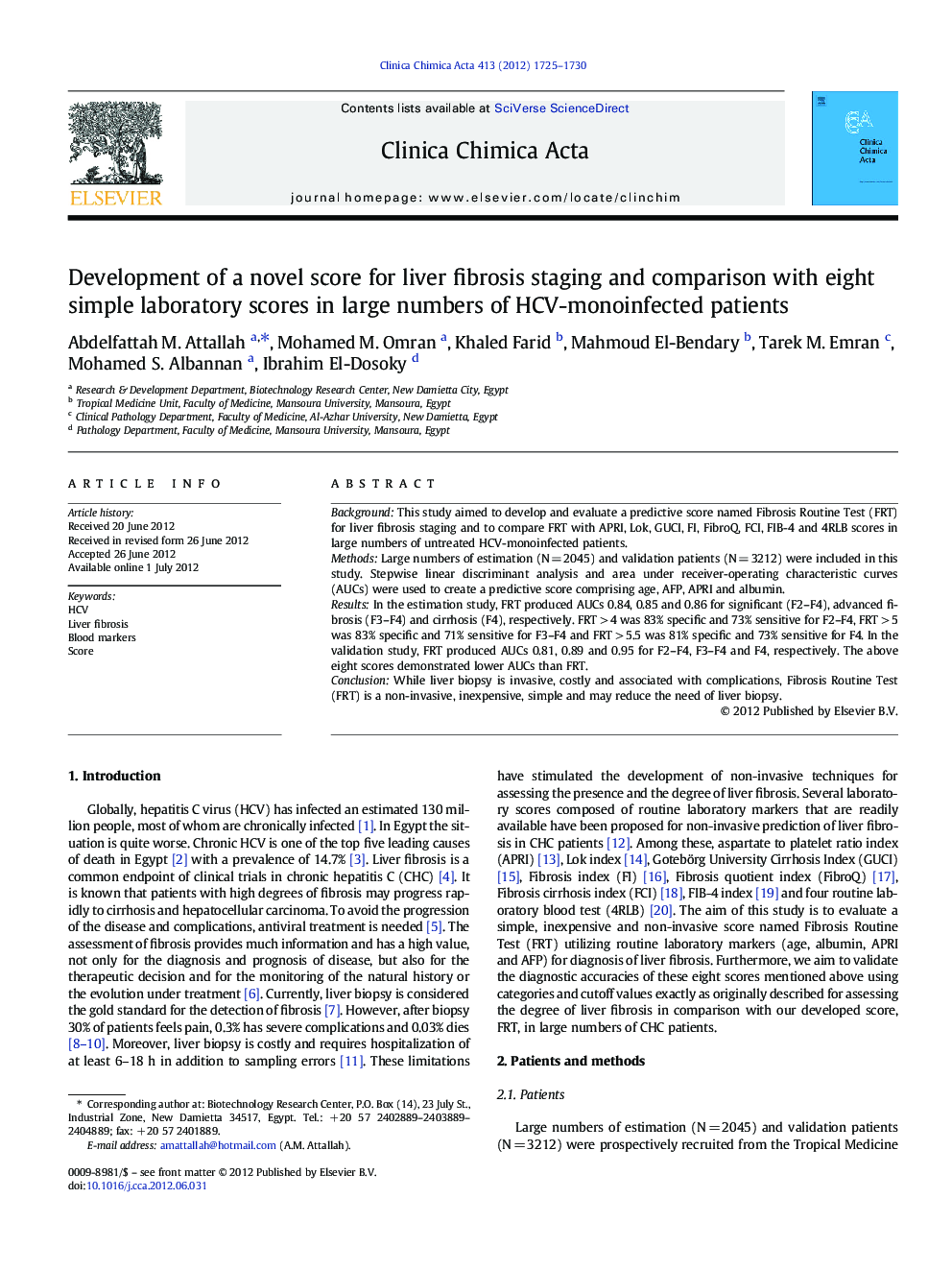| Article ID | Journal | Published Year | Pages | File Type |
|---|---|---|---|---|
| 1965551 | Clinica Chimica Acta | 2012 | 6 Pages |
BackgroundThis study aimed to develop and evaluate a predictive score named Fibrosis Routine Test (FRT) for liver fibrosis staging and to compare FRT with APRI, Lok, GUCI, FI, FibroQ, FCI, FIB-4 and 4RLB scores in large numbers of untreated HCV-monoinfected patients.MethodsLarge numbers of estimation (N = 2045) and validation patients (N = 3212) were included in this study. Stepwise linear discriminant analysis and area under receiver-operating characteristic curves (AUCs) were used to create a predictive score comprising age, AFP, APRI and albumin.ResultsIn the estimation study, FRT produced AUCs 0.84, 0.85 and 0.86 for significant (F2–F4), advanced fibrosis (F3–F4) and cirrhosis (F4), respectively. FRT > 4 was 83% specific and 73% sensitive for F2–F4, FRT > 5 was 83% specific and 71% sensitive for F3–F4 and FRT > 5.5 was 81% specific and 73% sensitive for F4. In the validation study, FRT produced AUCs 0.81, 0.89 and 0.95 for F2–F4, F3–F4 and F4, respectively. The above eight scores demonstrated lower AUCs than FRT.ConclusionWhile liver biopsy is invasive, costly and associated with complications, Fibrosis Routine Test (FRT) is a non-invasive, inexpensive, simple and may reduce the need of liver biopsy.
► Several scores are available to predict significant fibrosis and/or cirrhosis. ► Most of them were not derived in large numbers of untreated HCV-monoinfected patients. ► FRT is a simple, reliable, inexpensive and non-invasive in contrast to liver biopsy. ► Large numbers of HCV-monoinfected patients permit a robust analysis. ► FRT is better than eight scores in liver fibrosis staging in Egyptian CHC patients.
